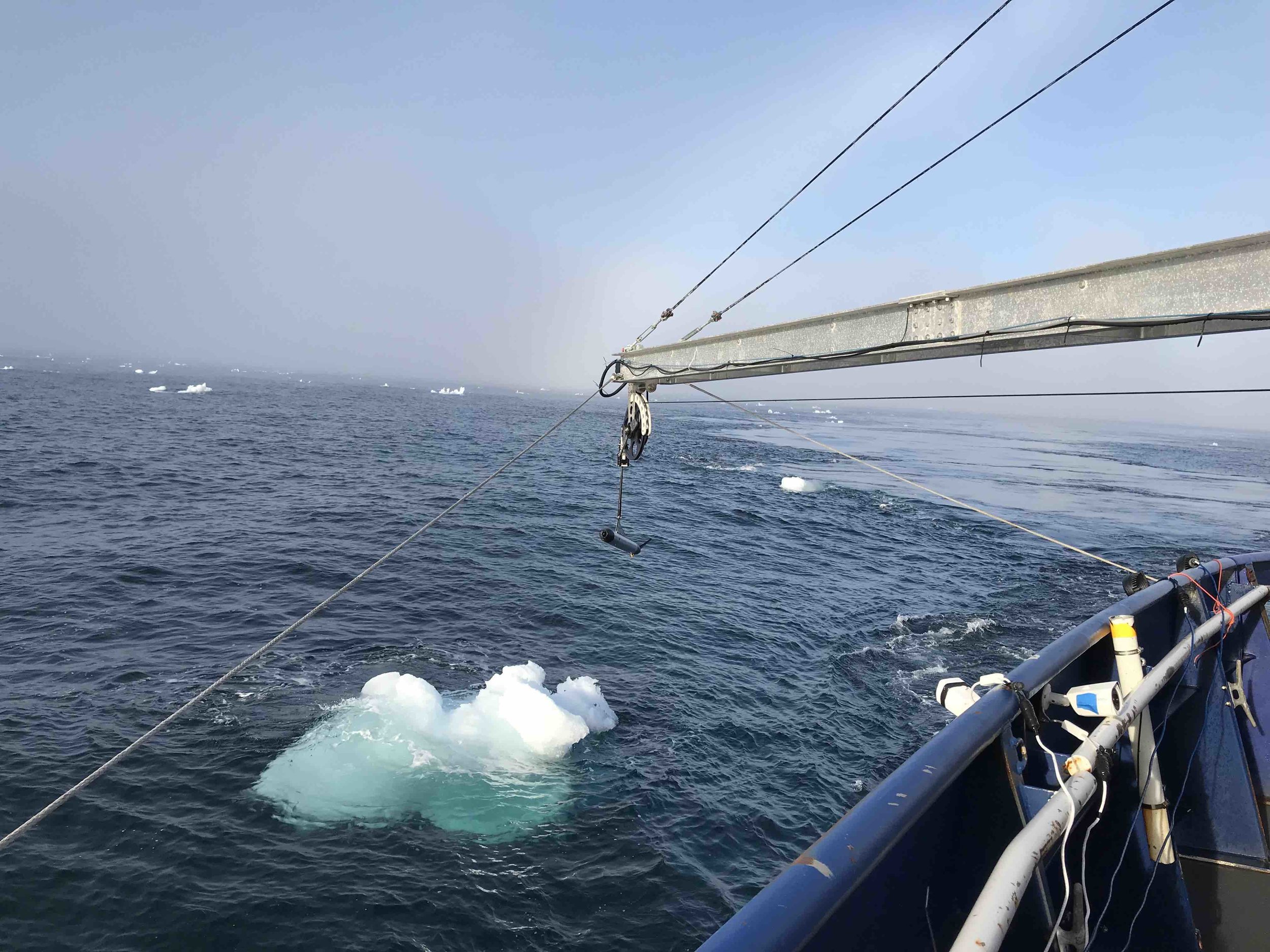Notes from the field on the R/V Sally Ride by Chief Scientist Emily Shroyer (OSU) with MOD-PIs (MacKinnon, Lucas) as part of the ONR-funded MISO-BOB experiment.
——-
July 23, 2019:
Greetings from 16°N 89°E...
Over the last week we have been filling in our map with a ship-based survey, working in the general vicinity of gliders and drifting buoys. Our survey has been oriented across curving AVISO SSH contours associated with a strong eddy to our southwest (see map and WW-buoy time series figs, below). The SVPB drifters that we deployed early in the cruise have fully populated our sampling region. We have been lucky to find ourselves in a region of convergence with strong near-surface fronts. It appears this also a region of biological activity with 10(!) sea turtle sightings and elevated near-surface chlorophyll and backscatter from the FastCTD, all of which lines up well with satellite ocean color images. The general sense is of a productive coastal upwelling jet ejected into the central Bay by the energetic mesoscale. We have collected some beautiful cross-front sections detailing this jet's rapid and complex evolution, as well as several realizations of the ocean’s response to atmospheric cold pools.
The winds have been picking up over the last two days, but we had a few very calm/quiet days over the weekend. There have been a few scattered rain events, typically in the afternoon, but overall the conditions have been clear and sunny. We even had a beautiful view of the recent lunar eclipse (photo courtesy San). Over the next few days we are planning on intensive sampling around buoys 2 and 3. The forecast indicates an increased likelihood of convective activity, but a well-organized miso event that started propagating into the Bay will likely decline before reaching our area.
July 14, 2019:
We have set up on the western side of international waters in a strong eastward flow. The three WHOI-Wirewalker buoys have been out for a few days now. One turbulence glider and one Seaglider have also been deployed in the region while two Spray gliders slowly make their way north. Thirty of the thirty-five drifters are also in the water. We are running a long survey line with the ship on the upstream side of the buoy array. We have been transiting through a region of upper ocean variability (MLD, T/S. Fluorescence) that we think may be related to an offshore filament of upwelled coastal water (based on HYCOM). You can see our general set up in the figure below (courtesy Tom) that shows Aviso SSH and currents, the buoy tracks over the last two days, and the ship track over the last day.













